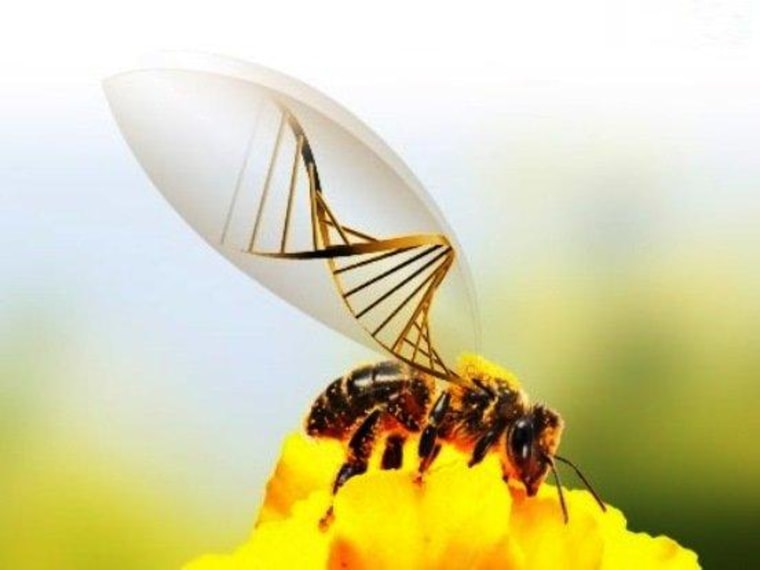Conservationists say it's high time to consider whether synthetic biology will solve some of the huge problems that beset endangered species, or bring new problems. It just might do both.
"Synthetic biology brings with it a powerful attraction, causing biology to veer towards engineering with its inherent approach of human problem solving," three experts on biodiversity and conservation say in this week's issue of PLOS Biology. "It may prove to be a cure for certain wicked problems. But we suggest that now is the time to consider whether synthetic biology may be a wicked solution, creating problems of its own, some of which may be undesirable or even unacceptable in the area of biodiversity conservation."
The PLOS Biology essay was written by Kent Redford of Archipelago Consulting, William Adams of the University of Cambridge, and Georgina Mace of University College London's Center for Biodiversity and Environment Research. The three conservationists are the organizers of a conference on synthetic biology, due to take place next week in Cambridge, England.
What is synthetic biology?
Synthetic biology takes advantage of genetic engineering to tweak existing organisms for new purposes — for example, strains of E. coli bacteria that live on coffee, or produce better biofuels.
More recently, researchers have talked about reshaping the genome of one species so that it reflects the traits of a closely related extinct or disappearing species — such as the American chestnut, the passenger pigeon, the Tasmanian thylacine or the Siberian woolly mammoth. Last month, that kind of de-extinction was discussed during a widely watched conference in Washington.
This month's conference takes a closer look at the scientific and ethical issues relating to conservation. Would de-extinction truly bring back the species that were wiped out, or will they actually be novel species, even alien species? How will revived species interact with the other species that have taken their place? Will we actually value the "natural" world less, because we assume de-extinction can bring back our favorites? What happens if synthetic life evolves in unforeseen ways? What's the implication of having patented life forms in the wild?
"A serious need exists for wider discussion of the relationship between synthetic biology and biodiversity conservation, and what choices society can and should make," the three experts say. But that poses a huge challenge, because many people haven't even heard of synthetic biology yet.
Plateau in awareness
The latest in a series of surveys conducted for the Synthetic Biology Project at the Woodrow Wilson International Center for Scholars suggests that public awareness about the issue is plateauing. Forty-five percent of those surveyed said that they had heard nothing at all about synthetic biology, which is about the same level of non-awareness found during the center's previous survey in 2010.
Lack of public awareness makes it difficult to conduct a wide-ranging debate over a technology's pros and cons, said Eleonore Pauwels, a research associate at the Wilson Center. "It is still at the stage of hype, and promises, and new funding coming in," she told NBC News. "When you don't have a lot of information, you only have the buzz or the hype."
The survey also found that 61 percent supported continuing research in synthetic biology, while 34 percent wanted such research banned until its implications and risks were better understood. "The more information you give to people, the more questions they're going to ask, and the debate becomes more complex," Pauwels said.
The situation is likely to change once synthetic-biology applications actually start hitting the market. Among the first applications are methods to produce flavors such as vanilla and saffron using genetically modified microbes. Another high-profile example is a project that uses genetically engineered yeast to produce artemisinic acid, the key ingredient for an anti-malaria drug.
"If they get the antimalarial drug out of clinical trial soon, it's going to refuel the interest in synthetic biology as a new way of manufacturing drugs," Pauwels said.
What about manufacturing mammoths? Is synthetic biology a technology whose time has come? Or should experiments on the bleeding edge of genetic engineering be put on hold for a while, as they were in the 1970s? Feel free to cast your vote in our unscientific survey, and voice your opinion in the comment space below.
More about synthetic biology:
- How synthetic biology will change us
- What to do about synthetic life?
- Cosmic Log archive on synthetic biology
The Wilson Center's 2013 nationwide telephone survey on awareness and impressions of synthetic biology was conducted by Hart Research Associates from Jan. 10 to 14. Hart Research surveyed 804 adults, including 243 who use only a cell phone. At the 95 percent confidence level, the data's margin of error is plus or minus 3.5 percentage points.
Alan Boyle is NBCNews.com's science editor. Connect with the Cosmic Log community by "liking" the log's Facebook page, following @b0yle on Twitter and adding the Cosmic Log page to your Google+ presence. To keep up with Cosmic Log as well as NBCNews.com's other stories about science and space, sign up for the Tech & Science newsletter, delivered to your email in-box every weekday. You can also check out "The Case for Pluto," my book about the controversial dwarf planet and the search for new worlds.
